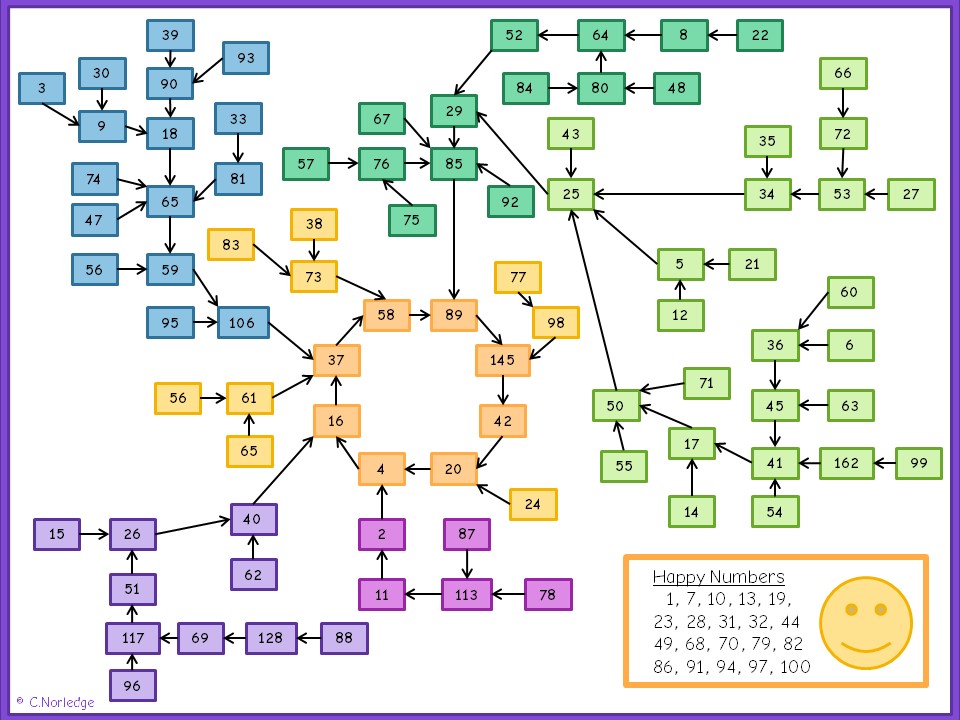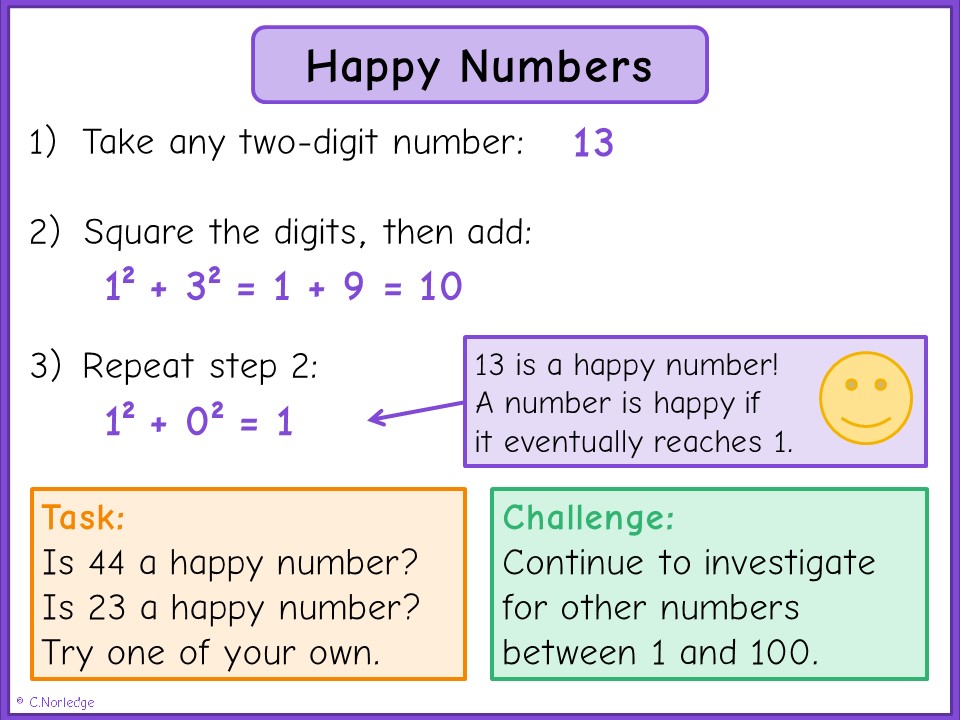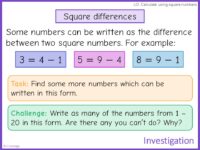This is one of my absolute favourite investigations to use when teaching square numbers. It can fit quite nicely into 15/20 minutes as a simple activity, or extend to a whole lesson with the class working together.
To find out if a number is happy:
- Pick any two-digit number (e.g. 23).
- Square and add the digits (4 + 9 = 13).
- Repeat (1 + 9 = 10).
- And again (1 + 0 = 1).
A number is happy if it eventually gets to 1. There are 20 happy numbers between 1 and 100; asking pupils to find two or three happy numbers works well as a quick activity, possibly towards the end of a lesson introducing square numbers.
However, the most interesting part is what happens with numbers that aren’t happy. Every number that isn’t happy eventually “spirals” into a repeating loop:
4 → 16 → 37 → 58 → 89 → 145 → 42 → 20 → 4
By extending the time allowed, pupils quickly discover this loop for themselves. Some then realise that they can rule out reverse digits (e.g. if 42 isn’t happy, then 24 won’t be either). It’s quite powerful to ask pupils to work in pairs or groups, as this allows lots of opportunity for planning and discussion.
I’ve previously used the board to map this “spiral” out for pupils, asking them to come up and add any numbers that they can. I also spent one very rainy Sunday afternoon transferring this map to a PowerPoint slide with colour coding (cause I’m a loser)… I think it looks very satisfying!


